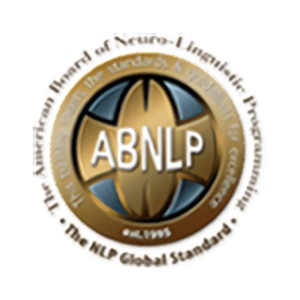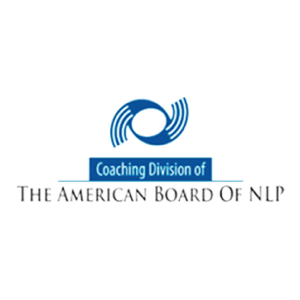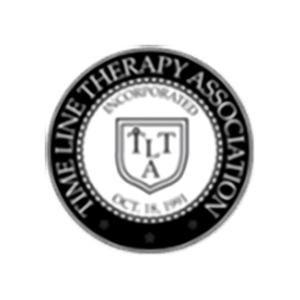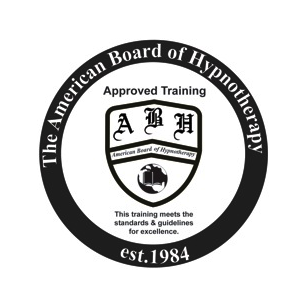NLP, also known as Neuro-Linguistic Programming, has many different techniques that can be applied and used to achieve positive results.
One of these is submodalities, a vast and highly intricate technique that can help change the way you or your subject perceive the world. This article will take an in-depth look at the technique and go over how it can be applied.
What Are Submodalities in Neuro-Linguistic Programming?
In NLP, submodalities refer to the specific qualities or characteristics of a person’s internal representation of a sensation or experience.
These qualities can include the size, color, intensity, location, and other aspects of the representation and can vary from person to person. By identifying and manipulating the submodalities of a person’s internal representation, an NLP practitioner can help the person change their emotional response to the sensation or experience.
For example, suppose a person is feeling anxious about a situation. In that case, the practitioner could help them change the size or intensity of the anxious feeling in their mind, which could ultimately lead to a change in their emotional state.
However, to better understand submodalities in NLP, it is important to have a baseline knowledge of the different types of submodalities out there.
Visual Submodalities
Firstly and most prominently, there are visual submodalities which refer to the specific qualities of a person’s internal visual representation of a sensation or experience. These qualities can include the size, color, intensity, location, and other aspects of the visual representation and can vary from person to person.
These are the most commonly used form of submodalities and can be among the most effective.
Auditory Submodalities
Auditory submodalities refer to the characteristics of one’s auditory representation of a sensation or experience. These qualities can include the volume, tone, pitch, and other aspects of the auditory representation.
Kinesthetic Submodalities
These are linked to how a person perceives and represents internal kinesthetic stimuli. These qualities can include the intensity, duration, location, and other aspects of touch that one may use.
Olfactory Submodalities
In NLP, olfactory submodalities are not commonly used or discussed, as the focus in NLP is typically on visual, auditory, and kinesthetic submodalities. However, some NLP practitioners may use olfactory submodalities in certain situations, such as when working with people who have a strong connection to their sense of smell.
By identifying and manipulating the olfactory submodalities of a person’s internal representation, an NLP practitioner can potentially help the person change their emotional response to a situation.
How Senses and Submodalities Can Alter Our Memories
Our senses and submodalities can have a significant impact on our memories.
Our memories are not simply recordings of events or experiences; they are constructed by our brains using information from our senses and past experiences, beliefs, and emotions.
How we perceive and process sensory information can influence how we remember events and experiences.
For example, if we see something with vivid colors and high contrast, we are more likely to remember it than if we see the same thing with dull colors and low contrast.
Similarly, if we hear something with a loud and clear tone, we are more likely to remember it than if we hear the same thing with a soft and muffled tone. These differences in perception can affect how we encode and retrieve memories and can ultimately influence the accuracy and vividness of our memories.
Furthermore, the submodalities of our internal representations of experiences can also affect our memories.
For example, if we have an anxious feeling associated with a particular memory, the size and intensity of that feeling can influence how we remember the event.
If the feeling is small and faint, we may remember the event as being less significant or stressful than if the feeling is large and intense. By manipulating the submodalities of our internal representations, we can potentially change our emotional response to the event and, therefore, the way we remember it.
How Submodalities Can Be Used in Everyday Life
NLP submodalities can be used in everyday life in several ways. By identifying and manipulating the submodalities of their internal representation, a person can change their emotional response to a sensation or experience and ultimately achieve more positive outcomes.
Here are a few potential examples of how submodalities can be used in everyday life:
Managing Negative Emotions
By identifying the submodalities of negative emotions, such as anxiety or sadness, a person can change the size, intensity, or location of the emotion in their mind, ultimately leading to a change in their emotional state.
For example, a person who is feeling anxious about an upcoming job interview could identify the submodalities of their anxious feeling, such as its size and intensity. By making the feeling smaller and less intense in their mind, they could reduce their anxiety and feel more confident and prepared for the interview.
Enhancing Positive Experiences
By enhancing the submodalities of a positive experience, such as a feeling of joy or satisfaction, a person can make the experience more vivid and enjoyable and ultimately increase their overall happiness and well-being.
Improving Memory
By using submodalities to enhance the sensory information associated with a memory, a person can improve their ability to remember the event or experience and ultimately improve their overall memory and cognitive functioning.
Consider the example of a person who wants to improve their memory of a recent vacation could enhance the submodalities of the memories associated with the trip, such as the colors, sounds, and sensations they experienced.
By making the memories more vivid and detailed in their mind, they could improve their ability to recall the events and experiences of the trip.
Overcoming Phobias
By using submodalities to change how a person thinks about a phobia, such as a fear of spiders or heights, a person can reduce the intensity of their fear and ultimately overcome the phobia.
If a person has a fear of public speaking, they could use submodalities to change how they think about giving a speech.
For example, they could make the anxiety associated with speaking in front of a large audience smaller and less intense in their mind and could focus on the positive aspects of the experience, such as the potential for personal growth or the opportunity to share their ideas.
By using submodalities in this way, they could reduce their fear and ultimately overcome their phobia of public speaking.
In summary, submodalities can be a powerful tool for changing how we think and feel and can be used in various everyday situations to improve our emotional and cognitive functioning and achieve our desired outcomes.
Importance of Learning NLP Submodalities
The importance of learning about submodalities in neuro-linguistic programming (NLP) lies in the fact that by identifying and manipulating the submodalities of a person’s internal representation, one can help the person change their emotional response to the sensation or experience and ultimately achieve success in those pursuits.
Therefore, learning about submodalities can be an important skill for NLP practitioners, as it can enable them to better understand the underlying factors that influence a person’s emotional response and develop effective strategies for changing that response.
This makes it a valuable tool for professionals who want to achieve upward career mobility by making themselves more skilled and well-rounded individuals.
Additionally, if someone is in a position of influence, such as a coach or therapist, they can help patients or students who are struggling to be better able to achieve their goals.
In addition, learning about submodalities can also benefit individuals who are not NLP practitioners, as it can enable them to gain greater control over their thoughts and emotions.
By understanding the submodalities of their internal representations, individuals can learn to identify and change the factors that influence their emotions and can ultimately achieve success in various areas of their life.
Conclusion
NLP submodalities are a vast topic with a huge amount of room for learning and experience. There are multiple senses, each with dozens of their own individual components.
Now that you have a basic understanding of how NLP submodalities work, you can start achieving some of the benefits discussed above. However, this can be a long process requiring immense amounts of practice.
However, one potential way to make this journey easier is by having an experienced coach or an online course to help you out in the process so that you can find solutions to common pitfalls faced by many beginners or intermediate NLP practitioners.








